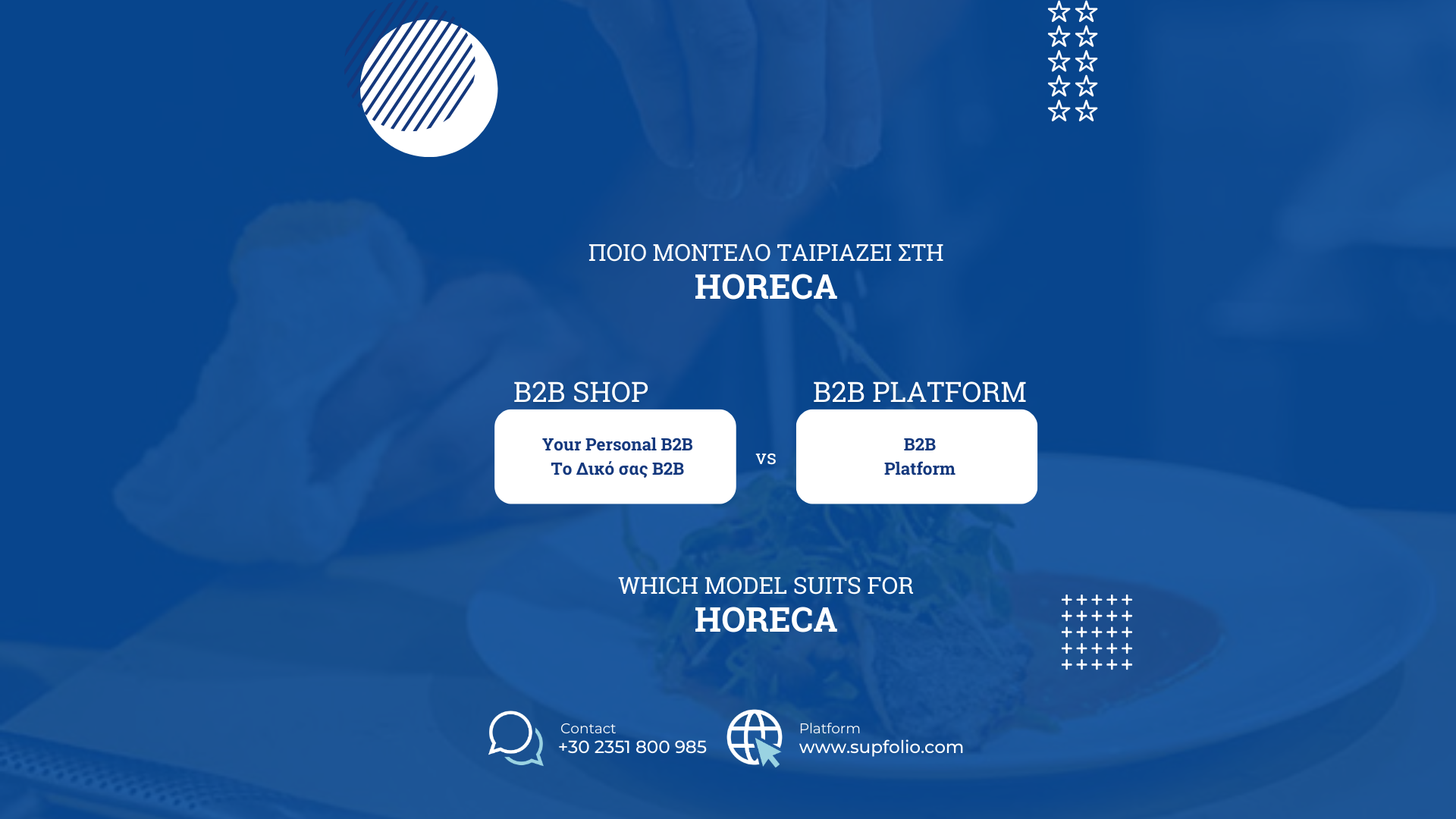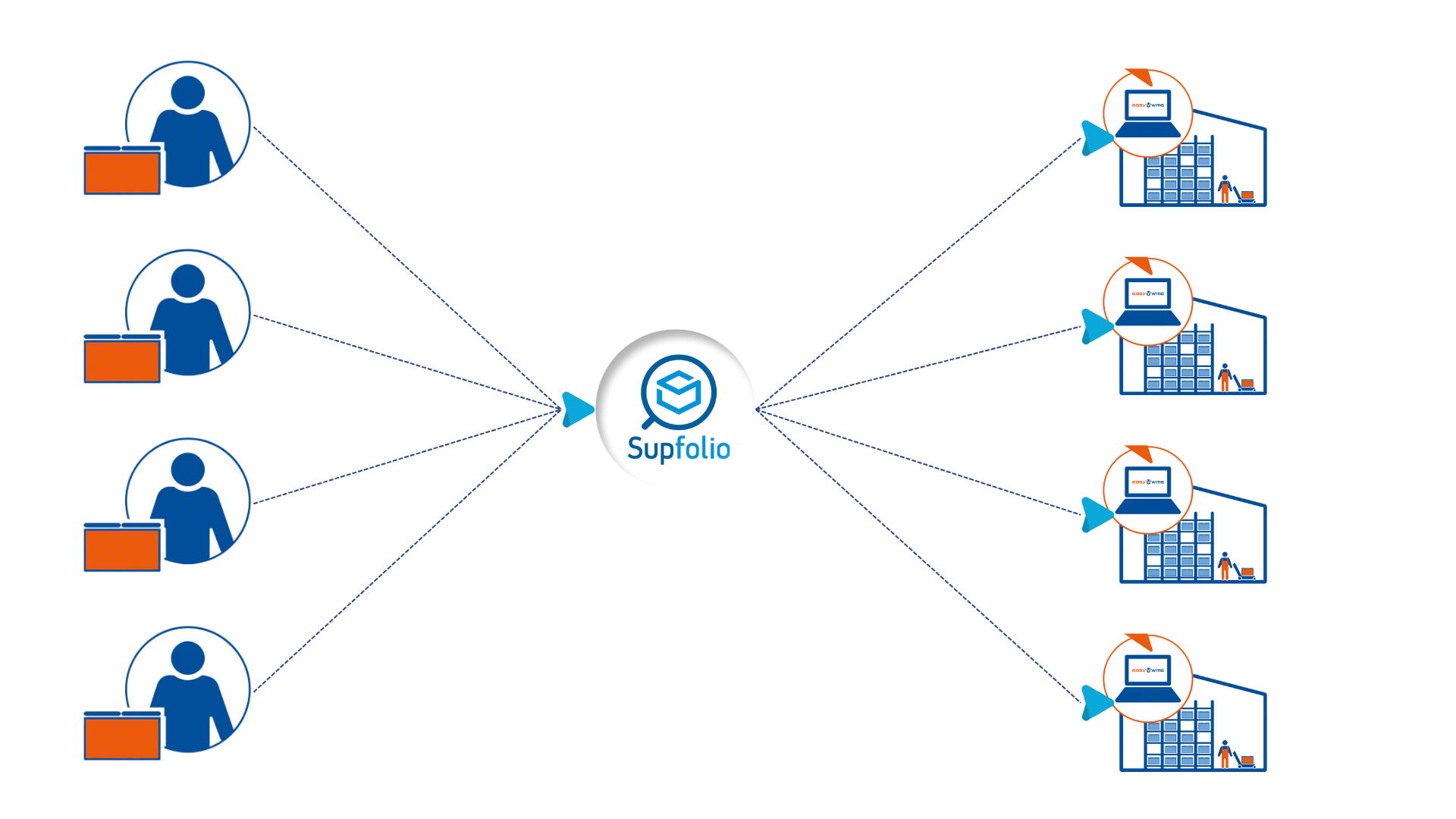
The HoReCa sector is undergoing a digital revolution. Hotels, restaurants, cafes, bars, and catering businesses are increasingly shifting procurement online — looking for speed, transparency, and better supplier relationships.
But if you’re a supplier, the big question is: should you invest in building your own online store, or join a multi-Supplier Platform like SupFolio?
Both models help suppliers sell digitally, but they differ greatly in cost, scalability, and customer reach. Let’s break down the key differences — and why the platform model is the future of HoReCa procurement.

What is an Online Supplier Store?
An online supplier store is a standalone e-shop operated by a single supplier. The supplier controls everything: from managing product listings and prices to handling logistics and deliveries.This model is common among wholesalers who want to serve their customers directly. However, it comes with limitations: high upfront investment, limited reach, and ongoing marketing costs to drive traffic.Pros
- Full control over pricing and branding
- Direct customer relationship
- Useful for niche or highly specialized suppliers
Cons
- Expensive to build and maintain
- Hard to attract and retain customers without heavy marketing
- Limited scalability — tied to the supplier’s own inventory and logistics
What is a B2B Platform?
A B2B Platform is a shared digital platform where multiple suppliers sell their products to HoReCa buyers. Suppliers manage their own product catalogs and pricing, while the platform provides the infrastructure: ordering system, payment solutions, logistics integrations, and buyer discovery. SupFolio is the first B2B software designed for the HoReCa sector in Greece — helping suppliers digitize their sales and giving buyers a single platform to manage all their procurement.Pros
- Wider reach: buyers discover you alongside other suppliers
- Lower risk and cost compared to running your own e-shop
- Multiple revenue opportunities (subscriptions, promotions, bulk deals)
- Highly scalable — add new buyers without extra overhead
- Shared marketing & brand power of the Platform
Cons
- Less branding control compared to a standalone store
- Competition is visible (but this also builds trust for buyers)
Key Differences Between Online Supplier Stores and B2B Platforms
Factor | Individual Store | B2B Platform |
|---|---|---|
| Operational Control | Supplier Manages Everything | Supplier Manages Only Products, Orders and Delivery |
| Customer Reach | Limited to existing clients | Broad HoReCa network of buyers |
| Costs | High setup + marketing | Low entry, pay as you grow |
| Scalability | Limited to one supplier’s growth | Scales with new suppliers & buyers |
| Logistics | Supplier must arrange | Platform integrates delivery |
| Revenue Potential | Product sales only | New Expanded Channel |
| Buyer Experience | One Supplier Only | All Suppliers Together |
Which Model Works Best in 2025?
If you already have a loyal base of buyers and want full control, a supplier-owned e-shop can work — but it’s a heavy lift.However, if your goal is to increase sales, reach new buyers, and grow without the tech burden, the Platform's model is far more powerful.SupFolio gives suppliers instant access to hundreds of HoReCa buyers in Greece, digitizes the order cycle, and reduces the time spent on manual order-taking and payment chasing. For buyers, it creates one digital platform to manage all suppliers, compare offers, and streamline procurement.
Why SupFolio is the Future of HoReCa Procurement
- Built for suppliers: No need to build or maintain your own online store
- Built for buyers: All suppliers in one place, with smart search and reordering
- Integrated with logistics and payments
- Designed to scale your sales with minimal cost